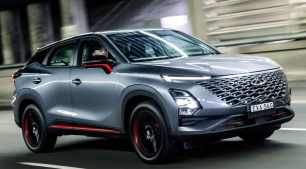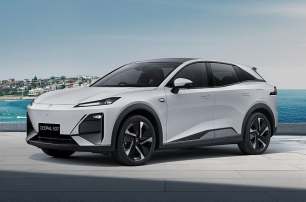Chery doesn’t quote a 0-100km/h figure for this car but expect a time in the mid-seven-second range, and it feels quick. Particularly urgent in the mid-range.
That’s because maximum torque is delivered across a broad plateau from 2000-4000rpm, right where you want easy pulling power for safe lane changes and drama-free overtaking.
This car tips the scales at around 1.5 tonnes (100kg more than 2WD), which is par for the small SUV course and it feels nimble in traffic and on the open road.
As is often the case with relatively small capacity turbo-petrol engines, you need to ease into the throttle gently for smooth take-offs. And once underway there are multiple modes available, the default ‘Eco’ setting, then ‘Sport’, ‘Snow’, ‘Mud’ and ‘Off-road’.
While we didn’t explore the loose surface modes, in Sport the seven-speed dual-clutch auto holds onto gears that little bit longer and changes down more readily. In fact, the transmission’s first few ratios feel quite low, so even in Eco the Omoda 5 GT has an eager, sporty personality.
Although the central shifter easily transitions to sequential ‘manual’ mode a pair of wheel-mounted paddles, sadly missing, would be even better for direct gear control.
Suspension is by struts at the front and multi-links at the rear, the latter a change from the ‘standard’ car’s torsion beam set-up.
The 18-inch alloy rims are shod with 215/55 rubber and that 55 aspect ratio makes for a relatively comfy tyre sidewall. But beware the ride is firmer than the standard car with high-frequency bumps making their presence felt, although it’s far from extreme.
In fact, the car is refined in terms of engine or any other noise with standard acoustic front side glass playing its part.
No surprise the steering is electrically assisted and it can be swapped through ‘Sport’ and ‘Comfort’ modes. The latter is relatively light and road-feel is okay.
Switch to Sport and the weight increases noticeably but road feel remains the same. Not the best in the business but not the worst, either.
Given this GT’s get up and go and sporty pretensions you’re likely to enjoy a drive on your favourite twisty backroad and this AWD version grips securely through the bends.
On the highway, with the active cruise engaged, it’s worth noting steering wheel inputs from the lane-departure function are constant and relatively abrupt even in sweeping, well-marked bends.
Braking is by discs all around, ventilated at the front with the GT featuring bigger rotors front and rear (308mm vs 283mm fr - 313mm vs 263mm rr). Aside from the fact it’s unusual to have a larger disc at the rear they’re pretty smooth but you need to be firm with the pedal to wash off speed effectively.
Under the heading of miscellaneous observations, in 3D mode the ‘AVM’ panoramic view system plays with your mind. It’s literally an out of body experience thanks to four external cameras providing an exterior view of the car on the road on the central media screen.
At just over 10 metres the turning circle is agreeably tight while vision for parking, supported by the reversing camera and panoramic view, is clear.
The driver’s door armrest is kinda firm and the media system, complete with ‘Hello Chery’ voice recognition, is quick to respond and easy to navigate.

